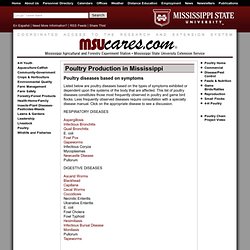

Punk Domestics. Hippie Homesteaders. It’s Molting Time Again For Chicken Keepers In The Northern Hemisphere « Chicken Keeping Secrets – How To Keep Chickens At Home. Well, for many of us it’s that time of year again; molting time.

I’ve been getting a lot of questions about how your flocks are suddenly dropping their feathers and you’re concerned. Because we have so many new chicken farmers joining us each month, I thought it would valuable to review the molting process Let’s start with the basics; molting is the process of feather loss and re-growth. It is a normal, natural and beneficial process. A hen that has molted is hardier and not as prone to disease. After a molt, you will likely see a reduction in the number of eggs your hens lay but the quality of the eggs increases and they are usually larger. During a molt, a hen will slow down and even stop laying eggs, giving her reproductive tract time to rest and rejuvenate. Most adult hens will molt once a year, some will molt twice each year and very few will molt once every two years.
Before coming into lay, an adolescent hen will go through 3 partial and one full molt. Murray McMurray Hatchery - Standard Breed Chicks. The Homesteader's Free Library. Poultry diseases based on symptoms. En Español | Need More Information?

| RSS Feeds | Share This! Poultry Production in Mississippi Poultry diseases based on symptoms Listed below are poultry diseases based on the types of symptoms exhibited or dependent upon the systems of the body that are affected. This list of poultry diseases constitutes those most frequently observed in poultry and game bird flocks. Aspergillosis Infectious Bronchitis Quail Bronchitis E. coli Fowl Pox Gapeworms Infectious Coryza Mycoplasmas Newcastle Disease Pullorum Ascarid Worms Blackhead Capillaria Cecal Worms Coccidiosis Necrotic Enteritis Ulcerative Enteritis E. coli Fowl Cholera Fowl Typhoid Heximitiasis Infectious Bursal Disease Moniliasis Pullorum Tapeworms Cannibalism Chiggers Erysipelas Fowl Cholera Fowl Pox Lice Marek's Disease Mites Omphalitis Ticks Aspergillosis Botulism Cage Layer Fatigue Fowl Cholera Heximitiasis Infectious Bursal Disease Marek's Disease Newcastle Disease Poultry Chain Project Video.
(11) Eugene Backyard Farmer. (12) Light Sussex (import from Austrialia) 4. Poo - The Chicken Keeper's Guide - The Poultry Pages - Allotment and Vegetable Gardening. Below are pictures of Chicken Droppings kindly donated by our members (the pictures not the poo).

Normal Picture taken by Catsmuvva These last three pictures have shed intestinal lining in them - quite normal, not a cause for concern. Coral coloured Urates These are frequently deposited overnight and are quite normal Oily and Foamy The range of "Normal" is huge :shock: Ceacal These are produced from the caecum of the chicken and are mustard to dark brown froth. Fly Maggots (picture curtesy of Vember) Flies will lay their eggs on moist chicken poo and in warm weather they will very quickly hatch into small maggots. Watery Watery droppings can be produced by hens which are too hot. Abnormal poos Coccidiosis produces blood in faeces. Above is from a chicken suffering with Clostridium perfringens.see: The hen who produced this specimen was an older bird who became very thirsty.She is producing a large amount of watery urates the cause of which is unknown, but could possibly be a kidney problem.
Worms. Homemade Chicken Brooder Designs & Pictures. {Free eBook} « How to Homestead.